Domanic Lavery
Experimental Investigation of Deep Learning for Digital Signal Processing in Short Reach Optical Fiber Communications
May 18, 2020
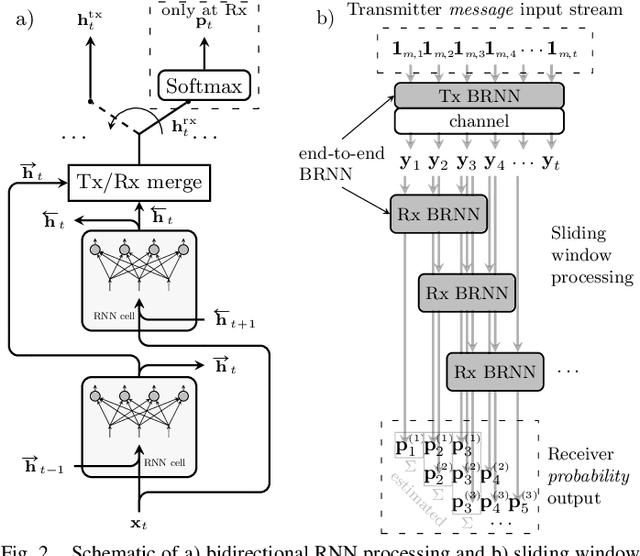
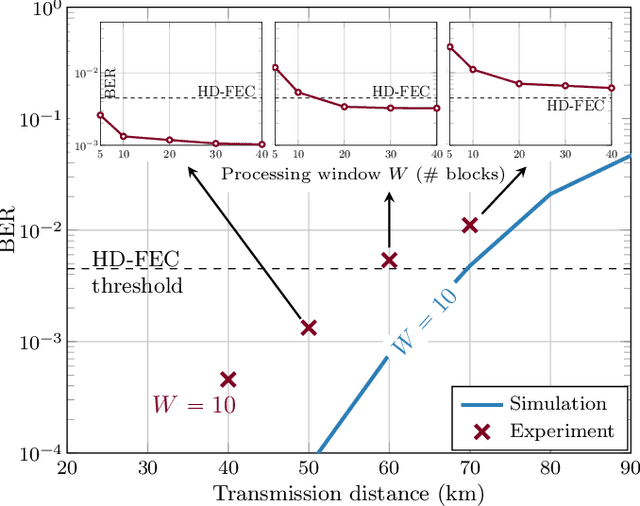
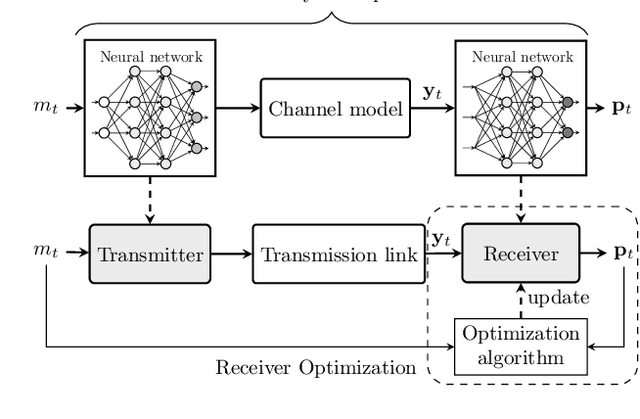
Abstract:We investigate methods for experimental performance enhancement of auto-encoders based on a recurrent neural network (RNN) for communication over dispersive nonlinear channels. In particular, our focus is on the recently proposed sliding window bidirectional RNN (SBRNN) optical fiber autoencoder. We show that adjusting the processing window in the sequence estimation algorithm at the receiver improves the reach of simple systems trained on a channel model and applied "as is" to the transmission link. Moreover, the collected experimental data was used to optimize the receiver neural network parameters, allowing to transmit 42 Gb/s with bit-error rate (BER) below the 6.7% hard-decision forward error correction threshold at distances up to 70km as well as 84 Gb/s at 20 km. The investigation of digital signal processing (DSP) optimized on experimental data is extended to pulse amplitude modulation with receivers performing sliding window sequence estimation using a feed-forward or a recurrent neural network as well as classical nonlinear Volterra equalization. Our results show that, for fixed algorithm memory, the DSP based on deep learning achieves an improved BER performance, allowing to increase the reach of the system.
Optical Fiber Communication Systems Based on End-to-End Deep Learning
May 18, 2020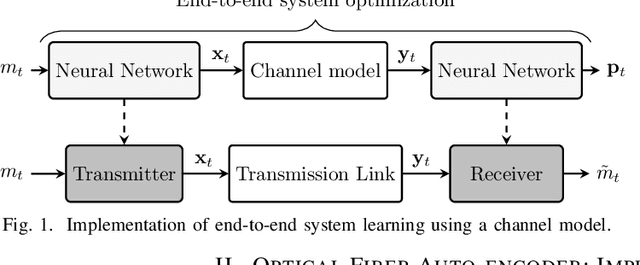
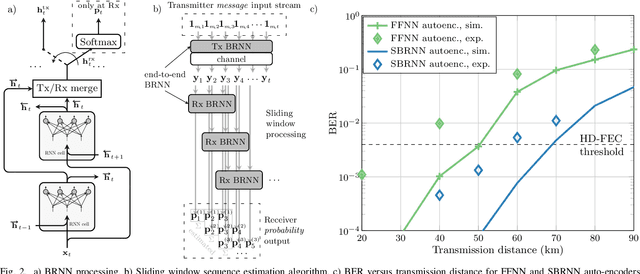
Abstract:We investigate end-to-end optimized optical transmission systems based on feedforward or bidirectional recurrent neural networks (BRNN) and deep learning. In particular, we report the first experimental demonstration of a BRNN auto-encoder, highlighting the performance improvement achieved with recurrent processing for communication over dispersive nonlinear channels.
Experimental Demonstration of Learned Time-Domain Digital Back-Propagation
Dec 23, 2019
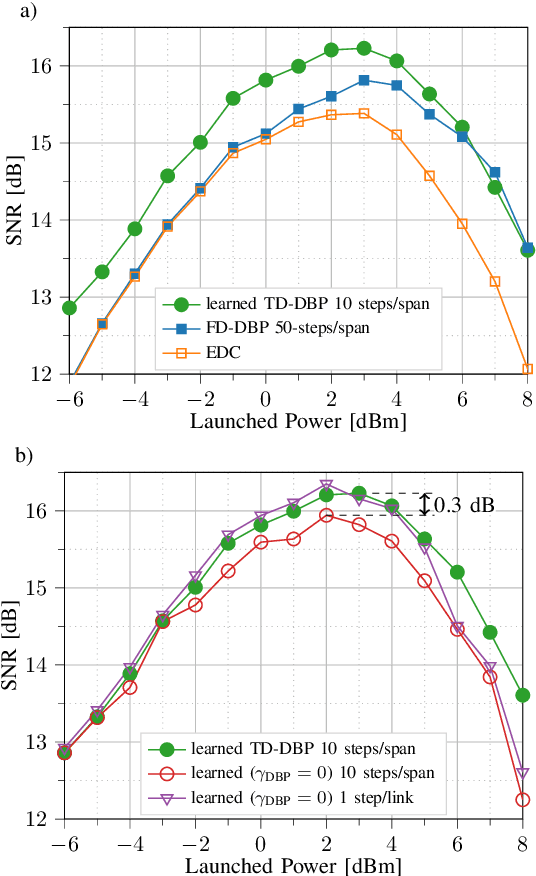
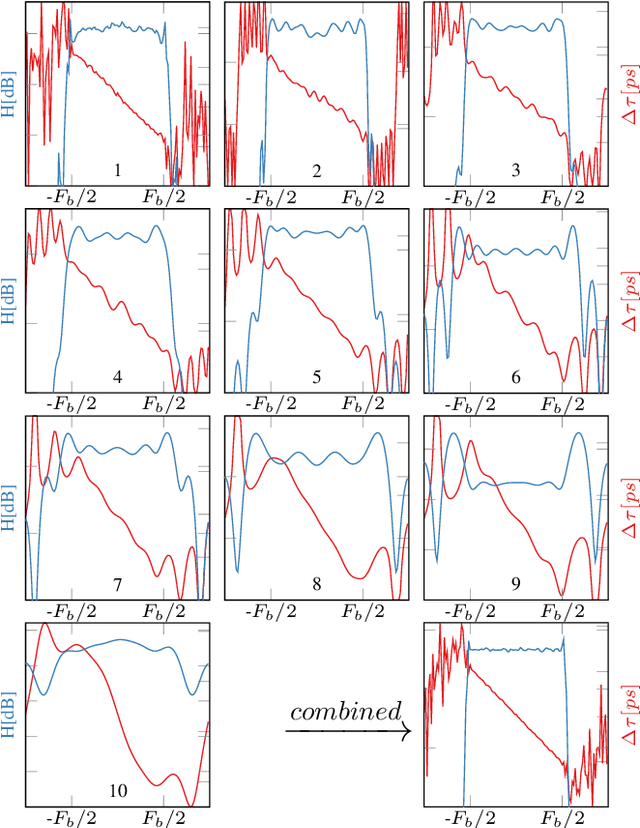

Abstract:We present the first experimental demonstration of learned time-domain digital back-propagation (DBP), in 64-GBd dual-polarization 64-QAM signal transmission over 1014 km. Performance gains were comparable to those obtained with conventional, higher complexity, frequency-domain DBP.
 Add to Chrome
Add to Chrome Add to Firefox
Add to Firefox Add to Edge
Add to Edge